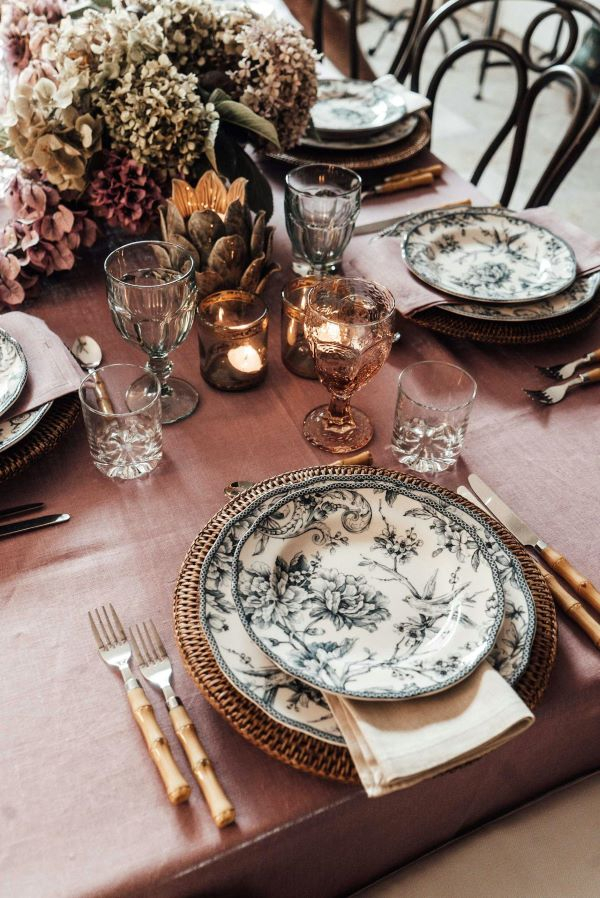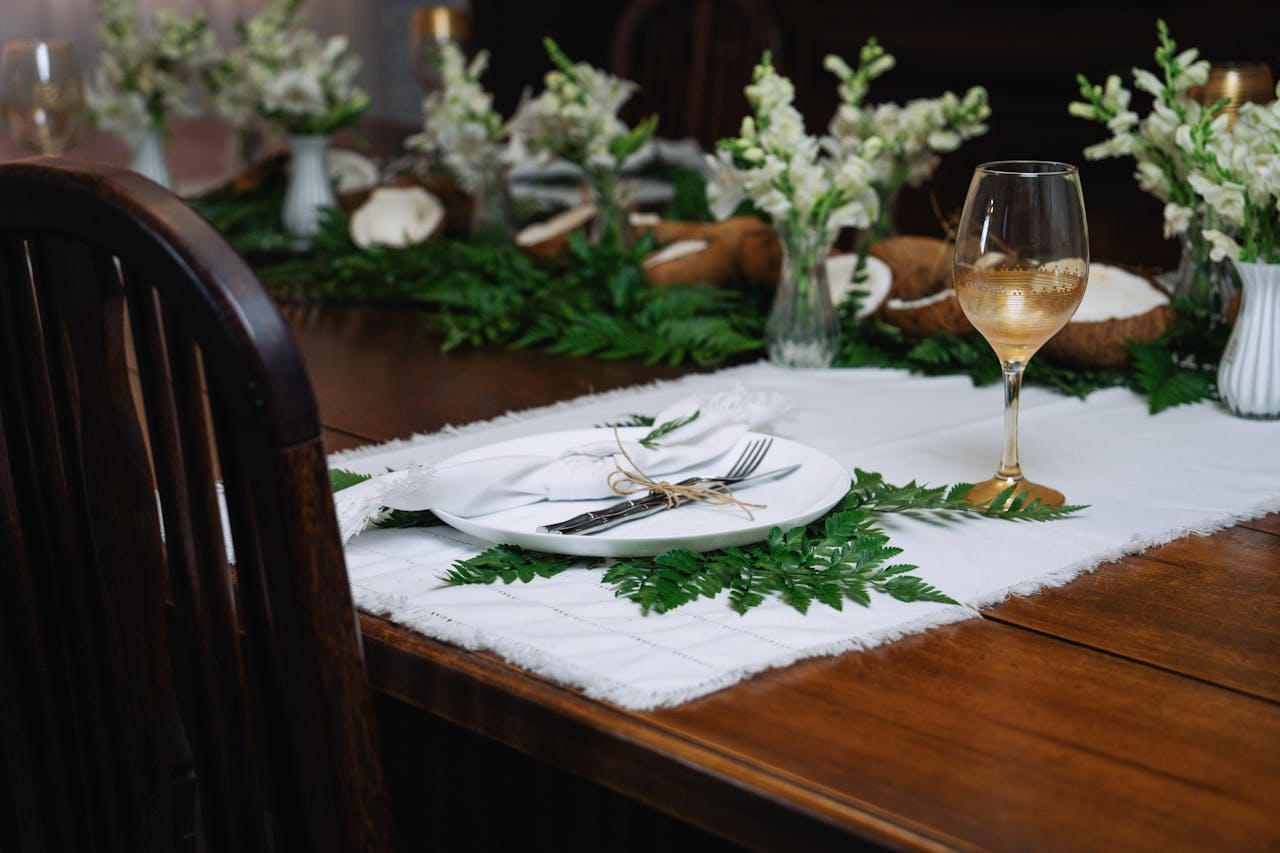When it comes to styling your dining table, the little details can make all the difference. Whether you're hosting a dinner party, setting up for a holiday, or just want to add some flair to everyday meals, table runners and placemats are simple yet impactful ways to elevate the look of your space. These often-overlooked accessories can tie together your decor, add texture and color, and make your dining experience feel special, all while protecting your furniture. Let’s explore how these small additions can have a big style impact on your dining table.
Why Table Runners and Placemats Matter
You might not realize it, but table runners and placemats have a big role in how a room feels. Without them, a table can look bare or unfinished. These simple pieces of fabric or material offer the perfect opportunity to add some personality and warmth. Not only are they decorative, but they also serve practical purposes like protecting your table from spills, scratches, and heat.
Choosing the right table runner or set of placemats can instantly refresh the space, creating a new mood or theme with minimal effort. Whether your style is minimalist, rustic, or eclectic, there's a runner or placemat out there that will complement your decor. Plus, switching them out for different seasons or events is an easy and affordable way to keep your dining room feeling fresh.
The Versatility of Table Runners
A table runner is a long, narrow piece of fabric or material that typically runs the length of the table. It’s like a runway for your table setting, acting as a decorative foundation that enhances the overall look. One of the best things about table runners is their versatility. You can use them alone or layer them over a tablecloth for added dimension and texture. Here are some of the ways a table runner can transform your dining experience:
-
Dress It Up or Down: For formal dinners, a rich, textured runner in a luxurious fabric like velvet or silk can add elegance. For casual meals, opt for a simple cotton or linen runner that keeps things laid-back and relaxed.
-
Seasonal Switch-Ups: Table runners are an easy way to change up your decor with the seasons. Think warm, earthy tones for fall, bright florals for spring, or festive prints for the holidays.
-
Highlight a Centerpiece: A table runner is a great way to frame and highlight your centerpiece, whether it’s a vase of fresh flowers, a bowl of fruit, or a collection of candles. The runner draws the eye to the middle of the table, creating a cohesive and balanced look.
Choosing the Right Table Runner
When selecting a table runner, there are a few key things to consider:
-
Length and Size: Ideally, your runner should hang over the edges of the table by about 6-12 inches on each side. This creates a balanced look without overwhelming the table. Measure your table before purchasing to ensure you get the right fit.
-
Material: Choose a material that fits your lifestyle and the occasion. For daily use, opt for something durable and easy to clean, like cotton or polyester. If you’re setting the table for a special event, consider more delicate materials like lace, satin, or linen.
-
Pattern and Color: Your runner should complement the rest of your decor. If you have a busy or colorful table setting, a solid or subtly patterned runner will keep the look cohesive. On the other hand, if your tableware is simple, don’t be afraid to go bold with bright colors or intricate designs.
The Charm of Placemats
Placemats are another easy way to dress up your dining table while adding a layer of protection. Unlike table runners, placemats are individual pieces that sit beneath each place setting. They provide a designated spot for each diner, which not only helps protect the table but also adds a sense of order and style to your dining experience.
Placemats come in a wide variety of materials, from natural fibers like bamboo and jute to fabrics like cotton and synthetic blends. They can also be made from more durable materials like plastic or silicone, making them ideal for families with young children

Benefits of Using Placemats
-
Protection: Placemats protect your table from scratches, spills, and heat, especially if you're using hot plates or dishes.
-
Style: Much like table runners, placemats can either blend into your existing decor or stand out as a focal point. A set of bright, colorful placemats can instantly liven up a neutral table, while elegant, monochromatic mats can give a sleek, modern vibe.
-
Easy to Clean: Many placemats, especially those made from plastic or other synthetic materials, are wipeable, making cleanup after meals a breeze. Fabric placemats can usually be thrown in the wash, making them a low-maintenance option.
Choosing the Perfect Placemats
When it comes to choosing placemats, the options are endless. Here’s how to pick the right ones for your space:
-
Shape: Placemats typically come in rectangular, round, or oval shapes. Rectangular placemats are the most common and work well for both casual and formal settings. Round placemats add a soft, relaxed touch to the table, while oval placemats offer a unique shape that can create a more formal look.
-
Material: Just like with table runners, the material you choose should fit both your lifestyle and your table’s aesthetic. Natural fibers like jute and rattan give a rustic, bohemian vibe, while leather or faux leather placemats can add a touch of luxury and sophistication.
-
Mix and Match: Don’t be afraid to mix and match placemats with your table runner or tablecloth. For example, a solid-colored runner paired with patterned placemats can create a striking contrast. Similarly, layering different textures, like a linen runner with woven placemats, adds depth and interest to the table.
Combining Table Runners and Placemats for Maximum Impact
Now that we’ve covered the basics of table runners and placemats, let’s talk about how to use them together. You don’t have to choose between one or the other—they can actually complement each other beautifully when styled correctly. Here are some ideas for combining the two:
-
Layering for Depth: Start with a neutral table runner and add bold or textured placemats on top. This creates visual interest and makes each place setting feel more intentional.
-
Color Coordination: Choose colors that either match or complement each other. For example, a soft gray runner paired with placemats in shades of blue creates a serene, calming look, while a bold red runner with gold placemats adds warmth and energy.
-
Create Balance: When layering a runner with placemats, aim for balance. If your runner has a bold pattern, opt for simple, solid placemats and vice versa.
Practical Tips for Setting the Table
To make the most of your table runners and placemats, keep these practical tips in mind:
-
Consider the Occasion: For formal dinners, a crisp white tablecloth with a runner and matching placemats will give a polished look. For more casual meals, feel free to experiment with colors, textures, and even mixing and matching different placemats.
-
Mind the Size of Your Table: If you have a smaller table, make sure your runner and placemats aren’t too large, as they can overwhelm the space. Opt for thinner runners and smaller placemats to keep the look proportional.
-
Keep It Functional: While style is important, functionality matters too. Make sure the materials you choose are easy to clean and durable enough for daily use if you plan to leave them on the table regularly.



